//googl/JQ8NysUse the Graph of f(x) to Graph g(x) = f(x) 3 MyMathlab HomeworkThis is a question about subtraction and how it is defined for functions Simply put math\left ( fg \right )\left ( x \right ) = f\left ( x \right ) g\left ( x66 Sketching graphs (EMCHB) Functions of the form \(y = ax^{3} bx^{2} cx d\) (EMCHC) The effects of \(a\) on a cubic function Complete the table below and plot the graphs of \(f(x)\) and \(g(x)\) on the same system of axes

Use The Graph Of Y F X To Graph The Function G X Chegg Com
G(x)=f(x-4) graph
G(x)=f(x-4) graph-So we have the graphs of two functions here we have the graph y equals f of X and we have the graph y is equal to G of X and what I want to do in this video is evaluate what G of f of F let me do the F of in another color F of negative five is f of negative five is and it can sometimes see a little daunting when you see these composite functions you're taking you're evaluating the function G at F Now your function has the form f(x) = 0x 4 It has slope a = 0 so it never changes (a constant) and intercepts the y axis in 4 and remember NEVER CHANGES!!!
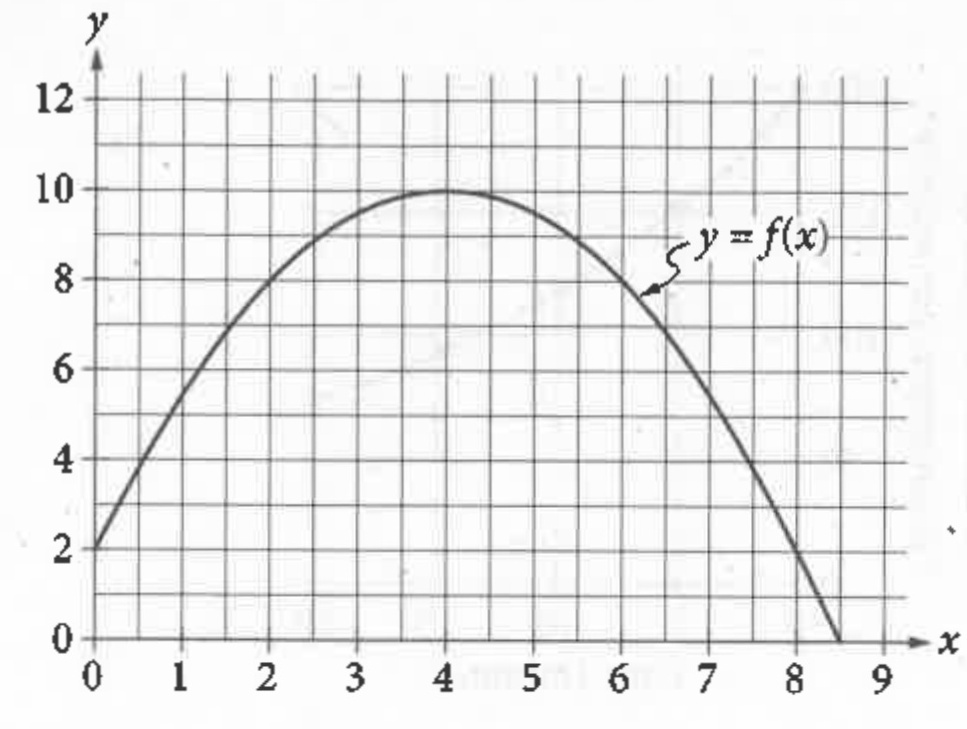



The Graph Of The Function F Defined By F X Dfrac 1 2 X 4 2 10 Is Shown In The Xy Plane Above If The Function G Not Shown Is Defined By G X X 10 What Is One Possible Value Of
Video Transcript Okay, So we are going to use why equals f of X to help us graph this equation So we have f of 1/2 X And because the one happens next to the X, that tells us that we're going to divide all of our X coordinates by 1/2 Or multiply that by two because you have to multiply about the reciprocal which is toI assume you know how to graph For each value of x the point on f (x) = x^2 4 is 4 units below the point with the same x value on g (x) = x^2 so take the graph of g (x) and move it down 4 units to obtain the graph of f (x) I'm confused by second part of your question ICreate your account View this answer In the case of g(x) = f(2x) g ( x) = f ( 2 x
When we have a function like f (x) = 4x2 6x 5, plugging an input in for x means finding & replacing every x with the input value For example, if our input is 3, we find & replace to get f (x) = 4(x)2 6(x) 5 ⬇️ f (3) = 4(3)2 6(3) 5 And you have to make sure you replace every x It's like how they had to replace every creepy (12,2) (10,4) (12,4) (3,4) (12,16) (12, 4) 1 Dividing the function by 2 divides all the yvalues by 2 as well So to get the new point, we will take the yvalue (4) and divide it by 2 to get 2 Therefore, the new point is (12,2) 2 Subtracting 2 from the input of the function makes all of the xvalues increase by 2 (in order to compensate for the subtraction) We will need to add 2 toA The graph of G(X) is the graph of FX) stretched vertically, flipped over the xaxis, and shifted 7 units to the left B The graph of G(x) is the graph of Fx) stretched vertically, flipped over the xaxis, and shifted 7 units
The vertex of function gis 4 units to the left of the vertex of function f The vertex of function gis 2 units below the vertex of function f Function gopens in the same direction as function fThe function g(x) is the result of f(x) being horizontally stretched by a scale factor of 1/3 Example 6 The image below shows the graph of f(x) Graph g(x) using the fact that it is the result of f(x) being stretched horizontally by a factor of 1/2 Make sure to include the new critical points for g(x) Consider the function F(x)=10^x and function G g(x) =f(x4) how will the graph of a function G different from the graph a function F the graph the function G is a graph a function F shifted four units to the right The graph of the function G is the graph the function F



You Are Given That F X X 2 4 And G X X 1 Sketched In A Graph Mathsgee Answer Hub




Oneclass Use The Graph Of Y F X To Graph The Function G X F X 4 Choose The Correct Graph
Which point is on the graph of f (x)=4^x Disclaimer The questions posted on the site are solely user generated, Doubtnut has no ownership or control overSo many possible combinations of types of equations for f(x) and g(x) If they are both linear f(x) = 3x 2 g(x) = 2x 5 h(x) = f(x) g(x) = 5x 3 This is also linear f(x) has slope = 3 and yintercept = 2 g(x) has slope = 2 and y intercX f (x) g (x) − 2 2 3 − 1 1 − How do you know?
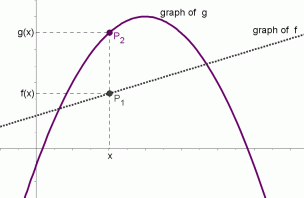



Graphical Interpretation Of Sentences Like F X G X And F X G X



Secure Media Collegeboard Org Digitalservices Pdf Ap Apcentral Ap15 Calculus Ab Q2 Pdf
Question 6 Let the function y = f(x) be continuous on R and have the following variation table The following conclusions correct Question 5 Let the function y = f(x) have the graph as shown below Let f(x)=4 sqrt(x) If g(x) is the graph of f(x) shifted down 2 units and right 1 unit, write a formula for g(x) like this g(x)= Please help ASAP I don't understand this at all!!!A function may be thought of as a rule which takes each member x of a set and assigns, or maps it to the same value y known at its image x → Function → y A letter such as f, g or h is often used to stand for a functionThe Function which squares a number and adds on a 3, can be written as f(x) = x 2 5The same notion may also be used to show how a function affects particular values



Solved The Graph Of A Function F Is Illustrated To The Right Use The Graph Of F As The First Step Toward Graphing Each Of The Following Functions Course Hero




Solved Use The Graph Of Y F X To Graph The Function G Chegg Com
Now plot the points and compare the graphs of the functions g and h to the basic graph of f (x) = x 2, which is shown using a dashed grey curve below The function g shifts the basic graph down 3 units and the function h shifts the basic graph up 3 units In general,Graph of the function f(x) = x 4 − 4 x over the interval −2,3 Also shown are the two real roots and the local minimum that are in the interval Definition Given a mapping →, in other words a function together with its domain and codomain , the graph of the mapping is theBeyond simple math and grouping (like "(x2)(x4)"), there are some functions you can use as well Look below to see them all They are mostly standard functions written as you might expect You can also use "pi" and "e" as their respective constants Please
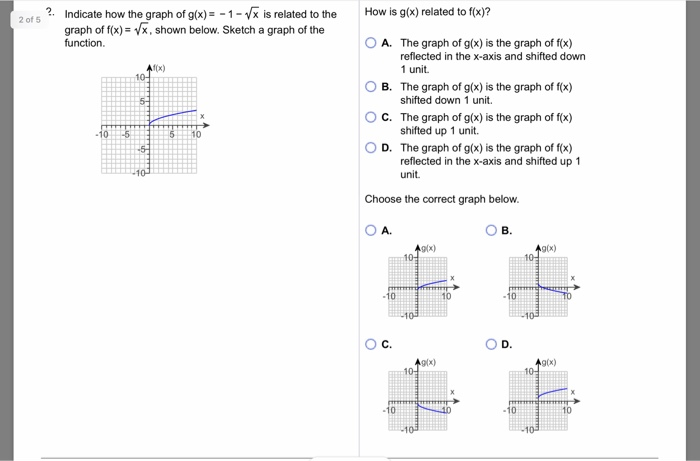



Gix Indicate How The Graph Of G X X 5 4 Is Related Chegg Com
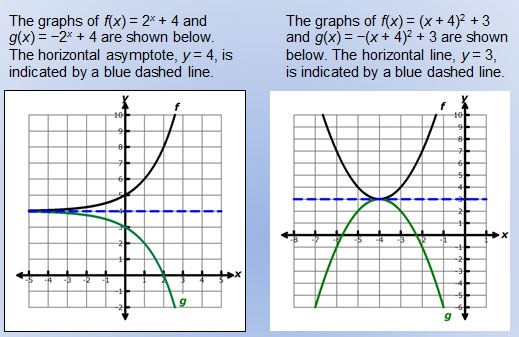



Untitled Document
So, you can build your graph giving values of x say, 1, 2, 3,and y will always be 4 giving a straight line passing through 4 and parallel to the x axisX f (x) g (x) − 2 2 3 − 1 1 − How do you know?Get stepbystep solutions from expert tutors as fast as 1530 minutes Your first 5 questions are on us!
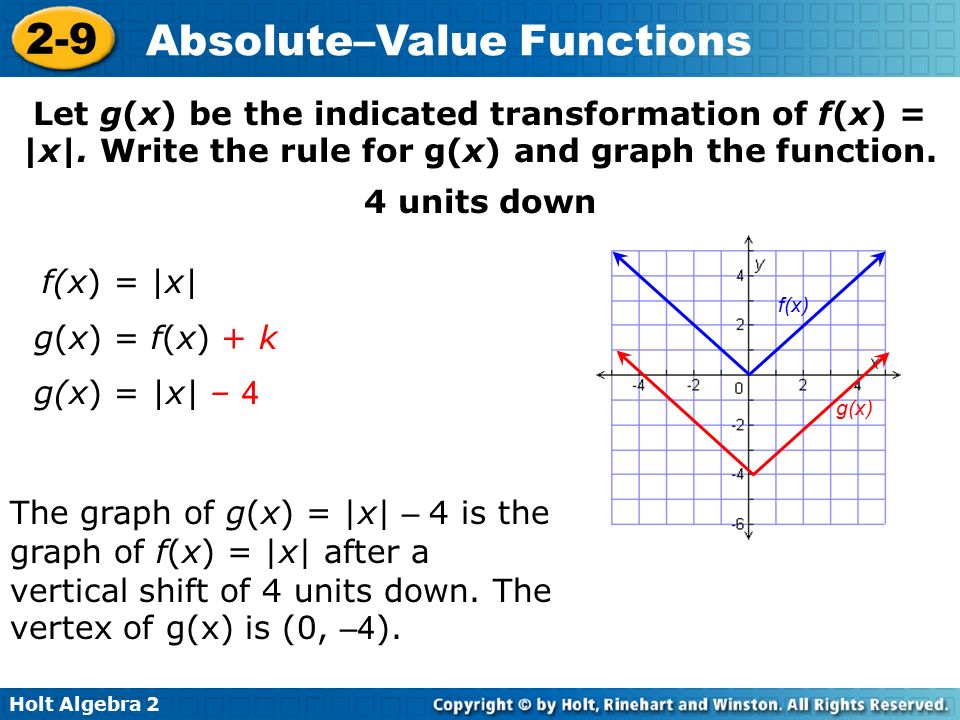



Graph And Transform Absolute Value Functions Ppt Video Online Download




Linear Functions And Their Graphs
A The graph of g(x) is shifted 3 units left and 4 units up B The graph of g(x) is shifted 3 units right and 4 units up C The graph of g(x) is shifted 3 units left and 4 units down D The graph of g(x) is shifted 3 units right and 4 units down To start, let's consider the quadratic function y=x 2 Its basic shape is the redcoloured graph as shown Furthermore, notice that there are three similar graphs (bluecoloured) that are transformations of the original g(x)=(x5) 2 Horizontal translation by 5 units to the right;The function g(x)=x−x g ( x) = x − x which means it subtracts the whole number part, leaving only the fractional part of the input value x x For integer values of x x, x =x x = x which means that g(x) =0 g ( x) = 0 So the graph of the function looks like this The range is 0≤ g(x)
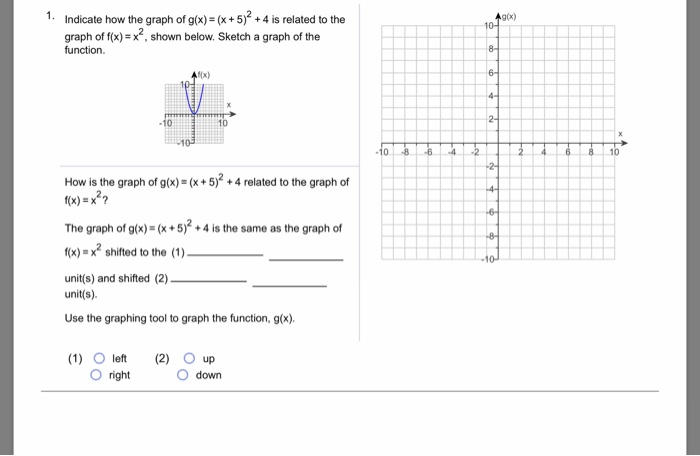



Gix Indicate How The Graph Of G X X 5 4 Is Related Chegg Com




Use A Graph To Find G F X When X 4 A Math 1010 Problem Youtube
Please Subscribe here, thank you!!!Since we want to reflect the parent function f (x) = (1 4) x f (x) = (1 4) x about the xaxis, we multiply f (x) f (x) by − 1 − 1 to get, g (x) = − (1 4) x g (x) = − (1 4) x Next we create a table of points as in Table 5 Consider functions fand g f(x) = 4(x – 3)2 6 g(x) = 2(x 1)2 4 Which statements are true about the relationship between the functions?




Vertical And Horizontal Transformations Read Algebra Ck 12 Foundation
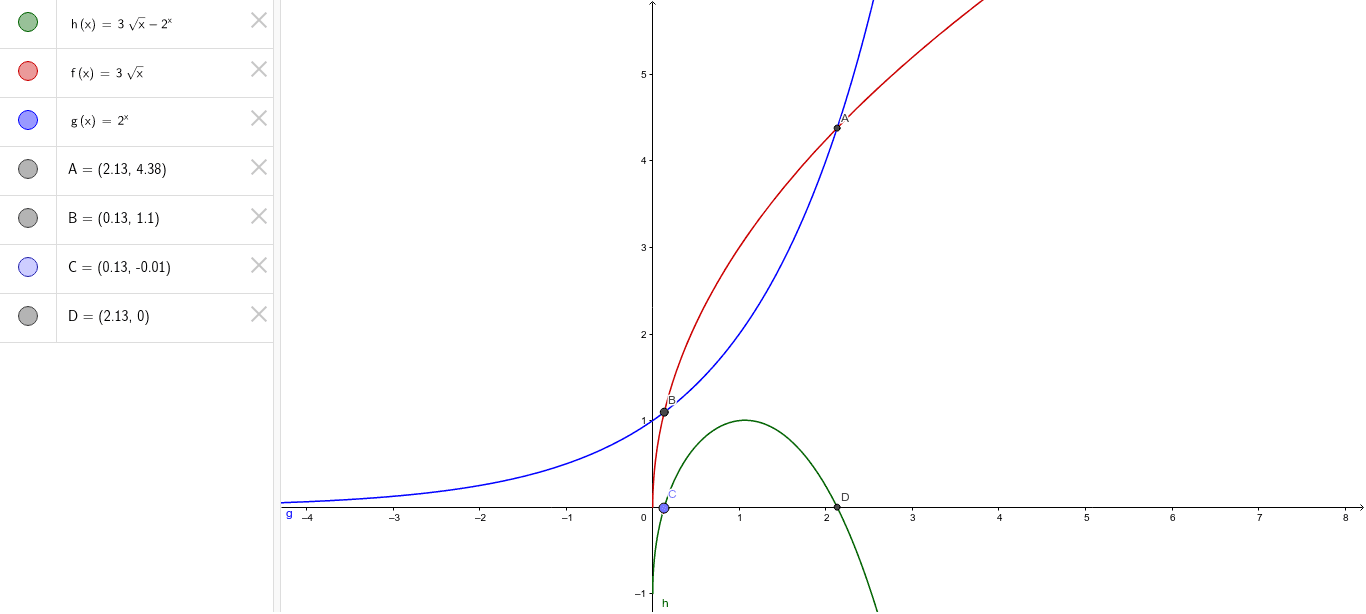



Graph Of F X G X F G X Geogebra
Let f(x)=4√x If g(x) is the graph of f(x) shifted up 3 units and right 2 units, write a formula for g(x) g(x)= algebra 2 The graph of g(x) is the graph of f (x)= x^2 shifted 4 units left, vertically stretched by a factor of 3, then shifted 5 units up What is the function rule for g(xUse the graph to find the indicated values x –5 –5 –5 5 5 5 y –5 –5 –5 5 5 5 0 0 0 10 f (g (− 2)) = 11 f ( Mathematics The graph of y = 2^x3 can be obtained by shifting the graph of y= 2^x a) 3 units to the right b) 3 units to the left c) 3 units up d) 3 units down e
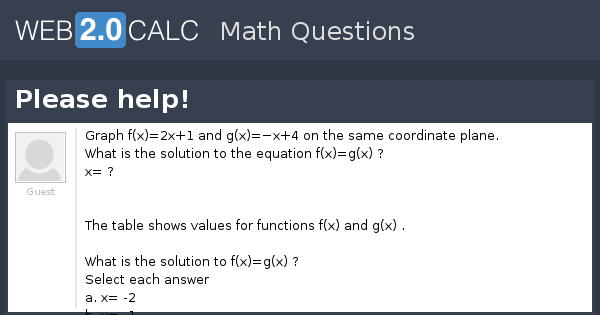



View Question Please Help



Solved Using The Graph Of F X And G X Where G X F Kx Determine The Value Of K 1 4 C 1 4 D Course Hero
Suppose that F(x) =X^2 and G(x) =1/4 (x7)^2 Which statement best compares the graph of Gx) with the graph of Fx)? The most common way to define a line or curve is to write y = some expression involving x (eg, y = 2x 5) Just know that graphing the equation y = 2x 5, is the same as graphing the function f(x) = 2x 5 Likewise, graphing the function f(x) = 2x 4 is the SAME as graphing the equation y = 2x 4Use the graph to find the indicated values x –5 –5 –5 5 5 5 y –5 –5 –5 5 5 5 0 0 0 10 f (g (− 2)) = 11 f




Require The Use Of A Graphing Calculator First Graph Functions F And G In The Same Viewing Window Then Graph M X And N X In Their Own Viewing Windows M X 0 5 F X G X F X G X N X 0 5 F X G X F X G X F X 3x 1 G X 0 5




Question 8 Graph The Function Use The Graph Of F X 4 To Obtain The Homeworklib
Graph f (x)=4^x f (x) = 4x f ( x) = 4 x Exponential functions have a horizontal asymptote The equation of the horizontal asymptote is y = 0 y = 0 Horizontal Asymptote y = 0 y = 0 F(x) = f(x) − k Table 251 Example 251 Sketch the graph of g(x) = √x 4 Solution Begin with the basic function defined by f(x) = √x and shift the graph up 4 units Answer Figure 253 A horizontal translation 60 is a rigid transformation that shifts a graph left or right relative to the original graphThe graph of f(x) = x3 was reflected in the yaxis, compressed vertically by a factor of and translated 4 units up and 6 units to the left What is the equation for the transformed function?
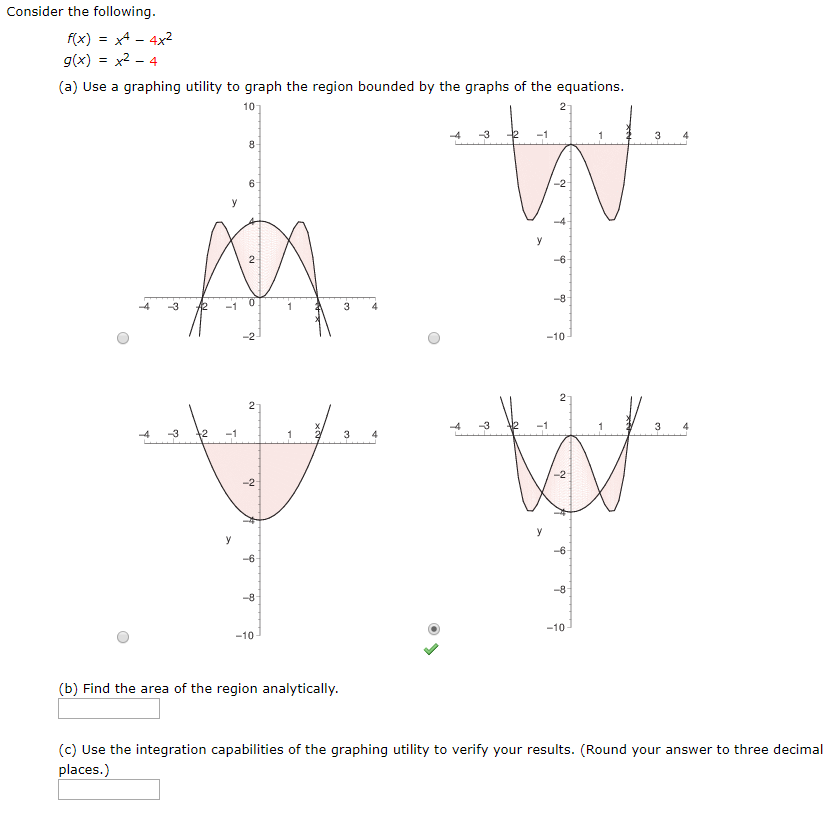



Consider The Following F X X 4 4x 2 G X Chegg Com




Use The Given Graphs Of The Function F Left In Blue And G Right In Red To Find The Following Limits Begin Array L Text 1 Lim X Rightarrow 1 F X G X Text 2
C < 0 moves it down We can move it left or right by adding a constant to the xvalue g(x) = (xC) 2F(x) = x 2 Here are some simple things we can do to move or scale it on the graph We can move it up or down by adding a constant to the yvalue g(x) = x 2 C Note to move the line down, we use a negative value for C C > 0 moves it up; Suppose g(x) = f(x3) – 4 Which statement best compares the graph of g(x) with the graph of (x)?




Graph Of The Rogue Function G X X 4 X 2 3 2 Download Scientific Diagram




Show All Details And Steps 1 What Sequence Of Transformations Will Yield The Graph Of G X Homeworklib
The graph of g(x) (x5)4 is the same as the graph of f(x) x shifted to the (1) unit(s) and shifted (2) unit(s) Use the graphing tool to graph the function, g(x) Question gix) Indicate how the graph of g(x) x5)4 is related to the graph of f(x) x, shown below Sketch a graph of the function 10 How is the graph of g(x)s (x 5)2 4 related to the graph of f(x)パ?Let g(x) = 2f(x) Fill in the table with the new coordinates that would be on g(x) You may sketch a graph if it would help you, but your graph will not be graded 10 10 8 8 6 6 (4,2) 4 (4,2) 4 2 10 10 15 10 8 2 2 (8,0) 4 (6,4) 4 6 6 8 8 ol 10 Give the new (x,y)coordinates of the 4Question I First let us rewrite the function as follows 1 2—3 g(x) = 4 (E) 5 l g(x) = 4(3)"2 5 Then, we will list the transformations as follows Horizontal Transformations HI) = 3" 1 f(x) = 3H "The graph was horizontally shifted to the right by 2 units"
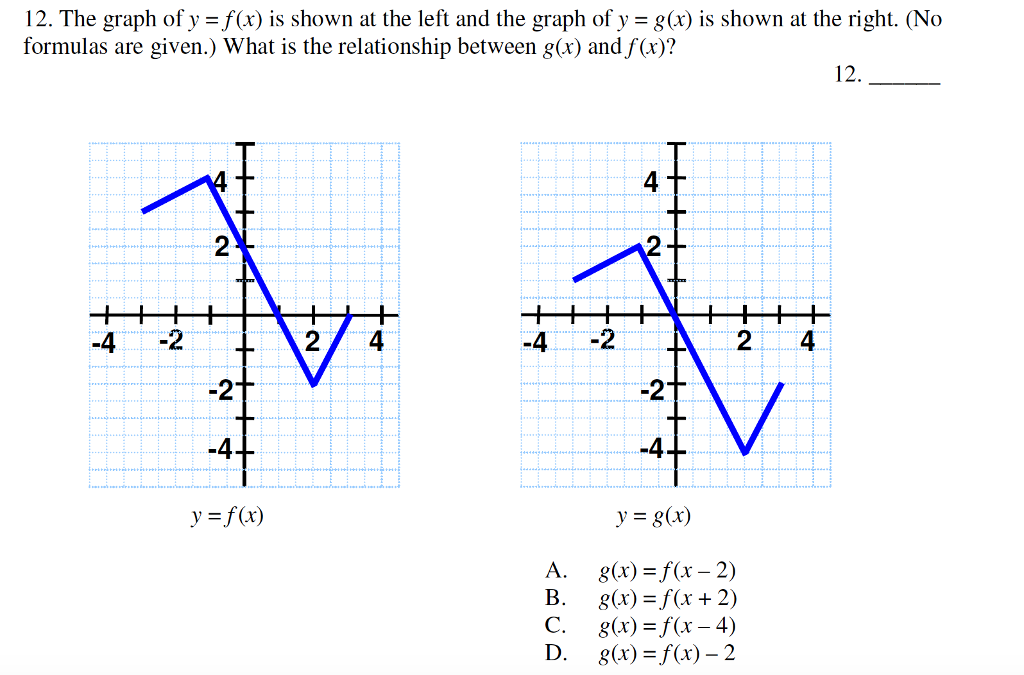



The Graph Of Y F X Is Shown At The Left And The Chegg Com



Math Colorado Edu Math1300 Resources Exam2reviewsol Pdf
Graph and Formula of f(x) g(x) – GeoGebra Graph and Formula of f(x) g(x) Graph and Formula of f(x) g(x) GeoGebra Create Class GeoGebra Home News Feed ResourcesGraph g(x)=x4 Rewrite the function as an equation Use the slopeintercept form to find the slope and yintercept Tap for more steps The slopeintercept form is , where is the slope and is the yintercept Find the values of and using the formSimple and best practice solution for g(x)=4f(x) equation Check how easy it is, and learn it for the future Our solution is simple, and easy to understand, so don`t hesitate to use it as a solution of your homework If it's not what You are looking for type in the equation solver your own equation and let us solve it




The Graph Of F X Shown Below Has The Same Shape As The Graph Of G X X4 X2 Which Contains Brainly Com



Integralrechnung Graph G F Mit F X 1 8 X 4 4x 3 G H Mit H X 1 8x 4 1 2x 3 27 8 Mathelounge
Question 7 Let the function y=f(x) have the graph as shown below How many extreme points does the graph of the function (g(x)=2 f(x)3) have?Answer and Explanation 1 Become a Studycom member to unlock this answer!More formally, f = g if f(x) = g(x) for all x ∈ X, where fX → Y and gX → Y 8 9 note 4 The domain and codomain are not always explicitly given when a function is defined, and, without some (possibly difficult) computation, one might only know that the domain is contained in a larger set




Describe How To Transform The Graph Of F Into The Graph Of G 1 Point F X X4 And G X X4 Brainly Com



Let K Be The Function Defined By K X 4 F X G X Consider X 2 And X 4 Determine Whether K Is Continuous At Each Of These Values Justify Your Answers Using Correct Limit Notation Apstudents
O A The graph of G(X) is the graph of F(x) compressed vertically, flipped over the xaxis, and shifted 4 units to the right B The graph of G(x) is the graph of F(x) compressed vertically, flipped over the xaxis, and shifted 4 units to the left C The graph of G(x) is the graph of F(x) stretched vertically, flipped over the xaxis, and shifted 4 units to the left D The graph of G(x) is the graph of F(xSketch the parent and the transformed functions 2 For each of the following functions i) state the parent function and transformationsF (g (2)), g (x)=2x1, f (x)=x^2 \square!



Search Q Grade 11 Evaluation Of Functions Tbm Isch



Do The Functions Math F X Sqrt X 4 Math And Math G X Sqrt X 4 Math Share A Tangent Line Quora
The graph of f(x) = 9(x – 5)2 – 7 is a parabola that opens up/down with its vertex at (x, y) = and f(5) = is the Min/Max value of f Find the equation of the axis of symmetry for the graph of the following quadratic functionFind stepbystep Calculus solutions and your answer to the following textbook question a Graph the functions f(x) = x/2 and g(x) = 1 (4/x) together to identify the values of x for which $$ \frac { x } { 2 } > 1 \frac { 4 } { x } $$ b Confirm your findings in part (a) algebraically The graph of g(x) shows exponential decay, while the graph of f(x) shows exponential growth New questions in Mathematics In the diagram of



Www Freeport K12 Pa Us Userfiles 8 Classes 54 1 7hw Pdf Id 6779



Y F X Graph
H(x)=x 2 5 Vertical translation by 5 units upwards;Free functions and graphing calculator analyze and graph line equations and functions stepbystep The point (0, 0) on the graph of f(x) tells you f(0) = 0 The point (4, 0) on the graph of g(x) tells you g(4) = 0 Now we know that g(4) = 0 = f(0) = f(4k) or 0 = 4 k 4 = k The value of k is 4 _____ f(xk) shifts the graph of f(x) to the left k units The points on the graph of g(x) all have xvalues that are left of the corresponding f(x) points by 4 units Hence k=4
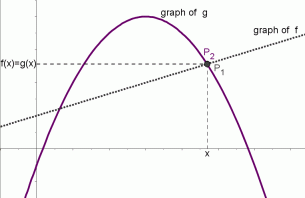



Graphical Interpretation Of Sentences Like F X G X And F X G X
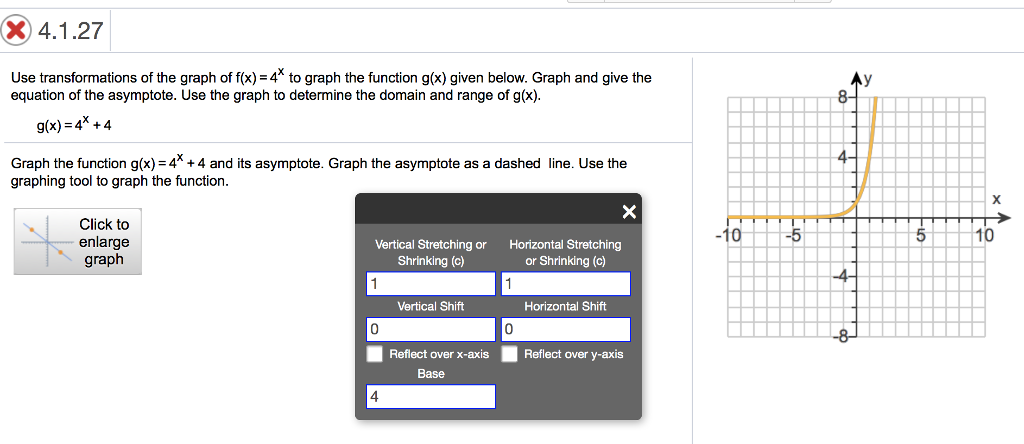



Use Transformations Of The Graph Of F X 4 X To Chegg Com
Functions Graphs and Intersections Suppose f(x) and g(x) are two functions that take a real number input, and output a real number Then the intersection points of f(x) and g(x) are those numbers x for which f(x) = g(x) Sometimes the exact values can be easily found by solving the equation f(x) = g(x) algebraicallyI(x)=(x) 2 Reflection along the origin



Solution Graph F X 4 X And G X Log Base4 X In The Same Rectangular Coordinate System
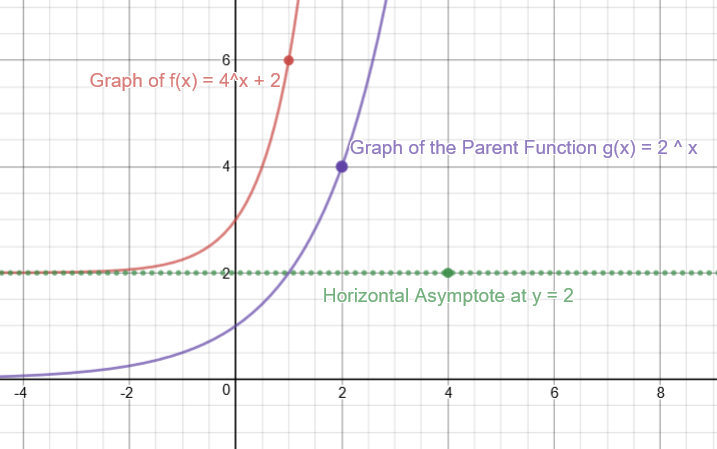



How Do You Graph F X 4 X 2 By Plotting Points Socratic



Graph The Functions F X X 3 And G X 3 X On The Same Coordinate Plane Find Fog And Graph It On The Plane As Well Sarthaks Econnect Largest Online Education Community




Graphing Shifted Functions Video Khan Academy




The Graph Of The Function F Defined By F X Dfrac 1 2 X 4 2 10 Is Shown In The Xy Plane Above If The Function G Not Shown Is Defined By G X X 10 What Is One Possible Value Of




Answered Use The Graph Of Y F X To Graph The Bartleby



Solution I Have To Use The Graph Of Y F X To Graph The Function G X F X 4




Use The Graph Of Y F X To Graph The Function G X Chegg Com
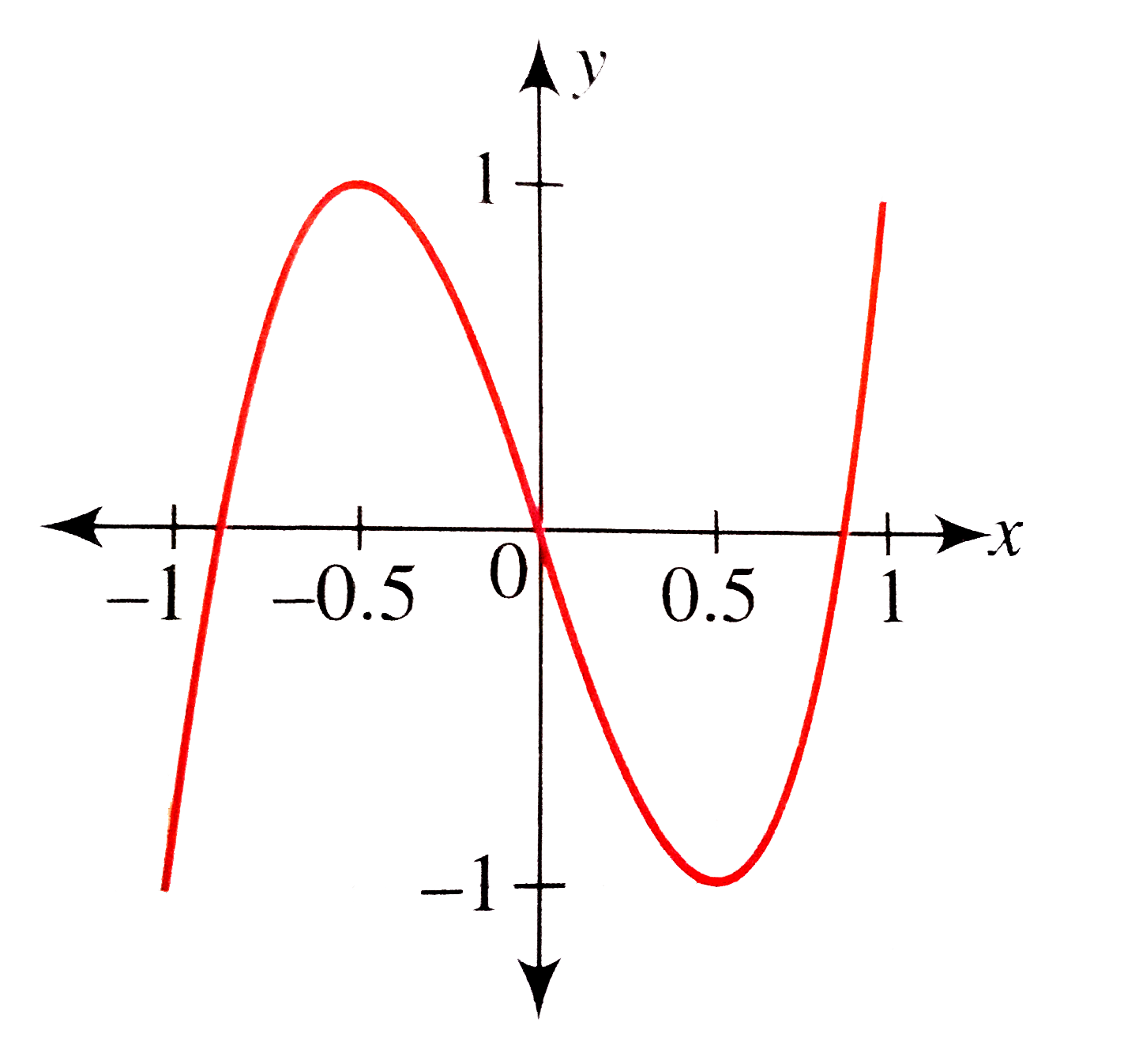



Draw The Graph Of F X 4x 3 3x And Hence Draw The Graph Of G X Cos 1 4x 3 3x
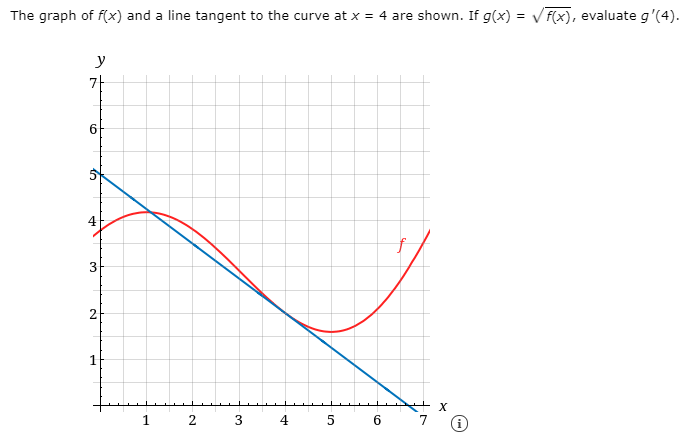



The Graph Of F X And A Line Tangent To The Curve At Chegg Com
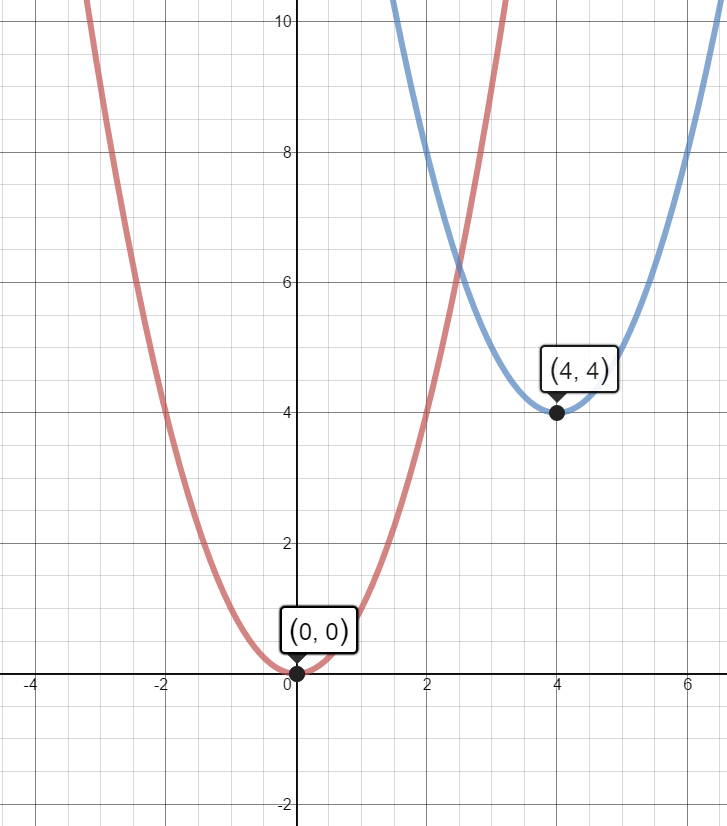



Describe A Sequence Of Transformations That Transform The Graph Of F X Into The Graph Of G X F X X 2 And G X X 4 2 4 Socratic
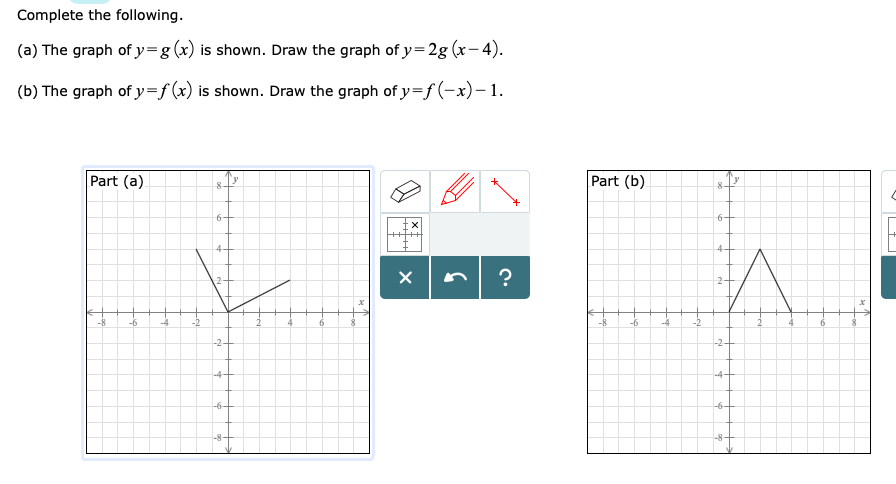



Complete The Following A The Graph Of Y G X Is Chegg Com



2




Sketch The Graph Of The Combined Function Of Y G F X For The Following Functions Of F X And G X Mathematics Stack Exchange
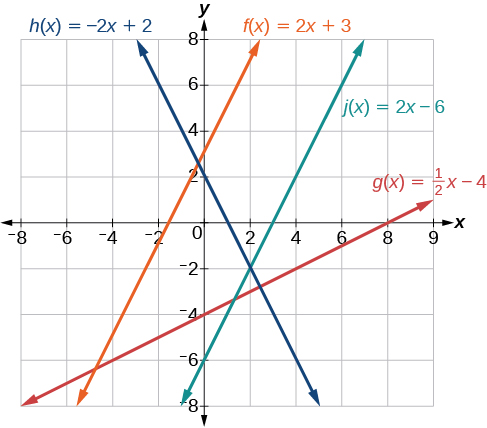



Graphs Of Linear Functions Precalculus
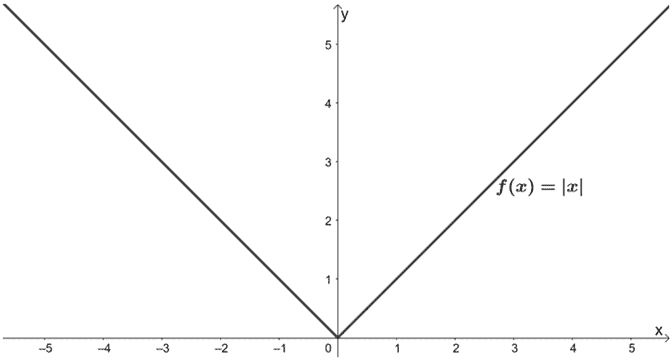



Horizontal Stretch Properties Graph Examples
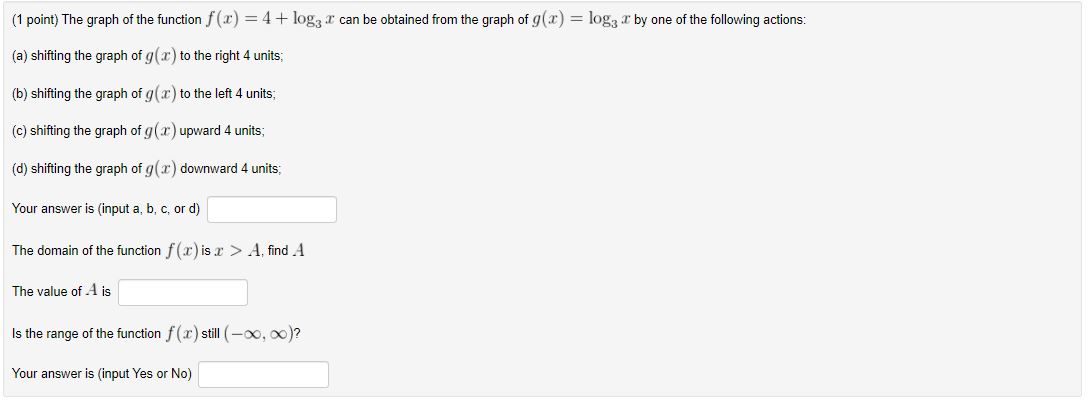



1 Point The Graph Of The Function F X 4 Lo
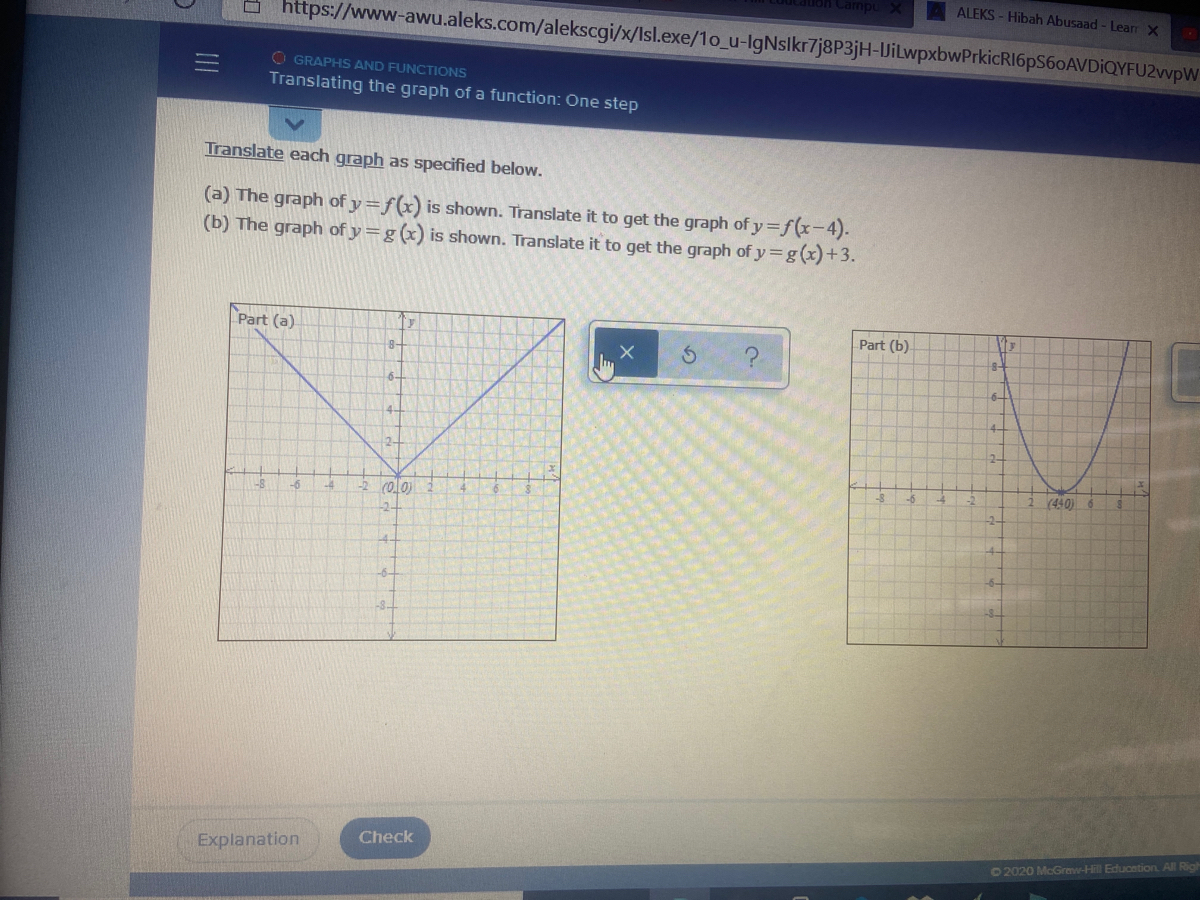



Answered D The Graph Of Y F X Is Shown Bartleby




Answered Function F Is Graphed Below And Bartleby




Sketch The Graph Of F X 4 X 1 Study Com




Graphs Of Polynomial Functions Developmental Math Emporium




Describe The Graph Of The Function G By Transformations Of The Base Function F 0 2 2 Homeworklib



Math Scene Inequalities Lesson 3 Absolute Values
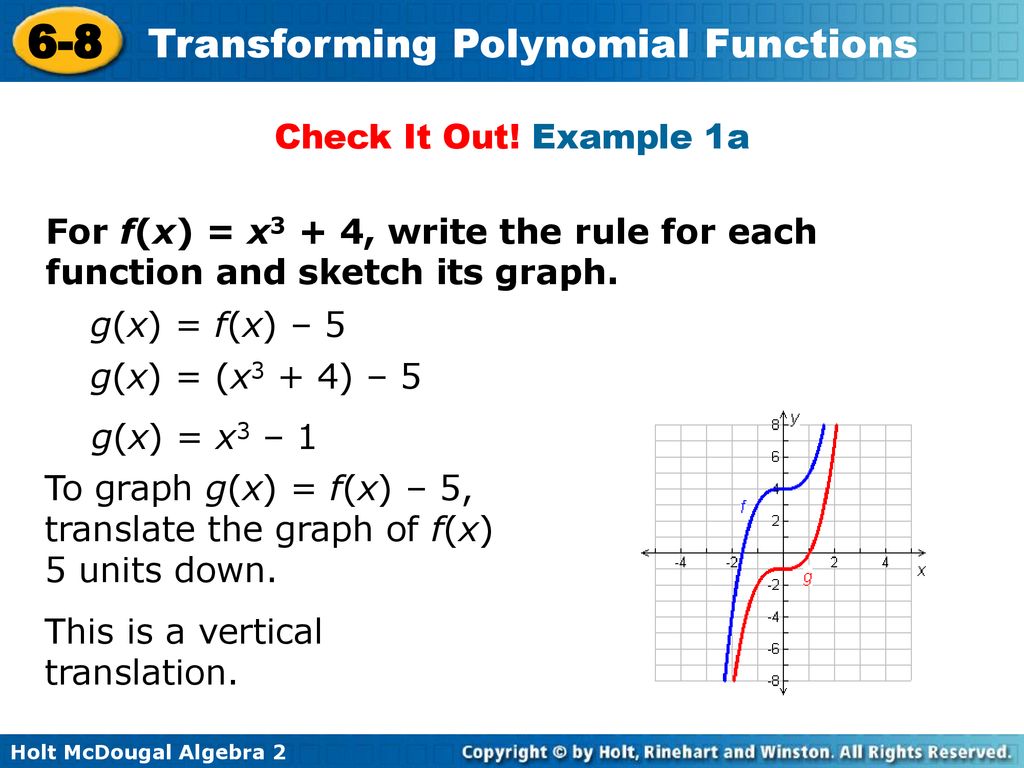



6 8 Transforming Polynomial Functions Warm Up Lesson Presentation Ppt Download




Use The Graphs Of Y F X And Y G X To Graph The Chegg Com




Suppose That G X F X 4 Which Statement Best Compares The Graph Of G X With The Graph Of F X Brainly Com
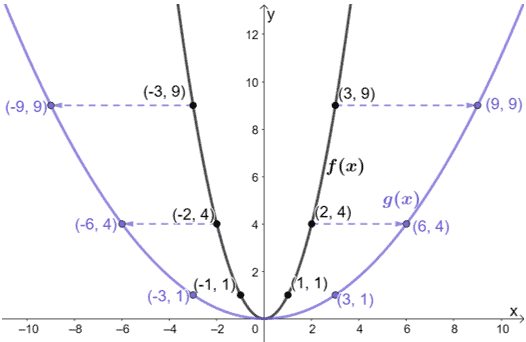



Horizontal Stretch Properties Graph Examples




The Graphs Of F And G Are Given A State The Values Of F 4 And G 2 B For What Values Of X Is F X G X C Estimate The Solutions Of The
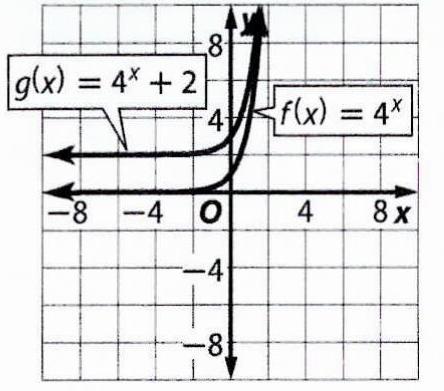



Use The Graph Of F X To Describe The Transformation That Results In The Graph Of G X Then Sketch The Graphs Of F X And G X F X 4 X G X 4 X 2 Snapsolve




If F X 1 X And G X X 4 Which Of The Following Is The Graph Brainly Com



1




Sketch The Graph Of The Functions F And G F X X 2 2x 4 G X X 4 Study Com



Solved Graph The Function G X X 4 As A Translation Of The Parent Function F Shown How Did The Transformation Affect The Domain And Range Course Hero




X Why Daily Regents Graphing And Translating Absolute Value August 14



F X 4 X 2 Graph Von G X X 2 So Verschieben Dass F Beruhrt Wird Mathelounge




Objectives Vertical Shifts Up And Down Horizontal Shifts




Find The Area Of Bounded By F X 2x 2 And G X X 4 2x 2 Study Com
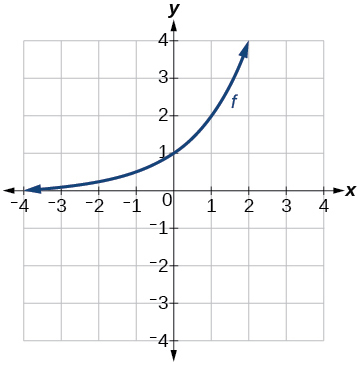



Transformation Of Functions Algebra And Trigonometry




Get Answer Show Transcribed Image Text Let G X Integrate X 4 F T Dt Transtutors
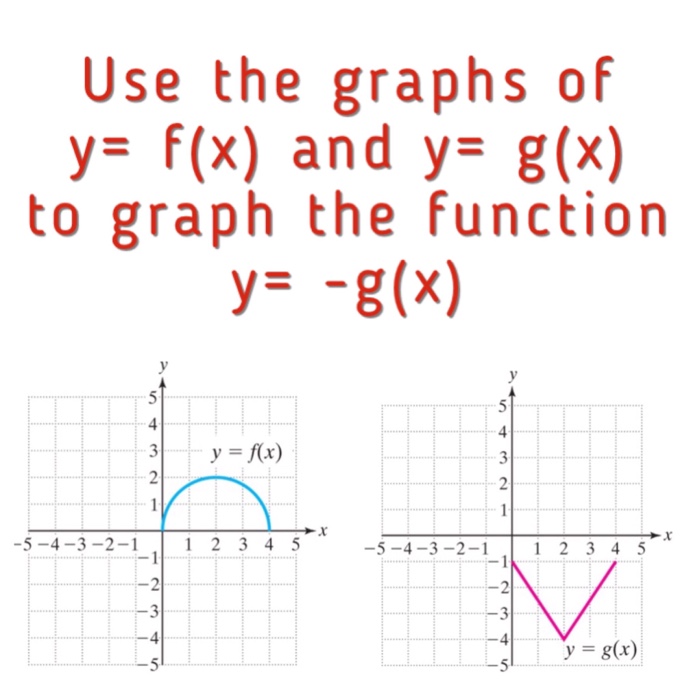



Use The Graphs Of Y F X And Y G X To Graph The Chegg Com




Please Helpthe Graph Shows The Function F X 6x 12 And G X 1 2 X 4 What Are The Solutions Of Brainly Com
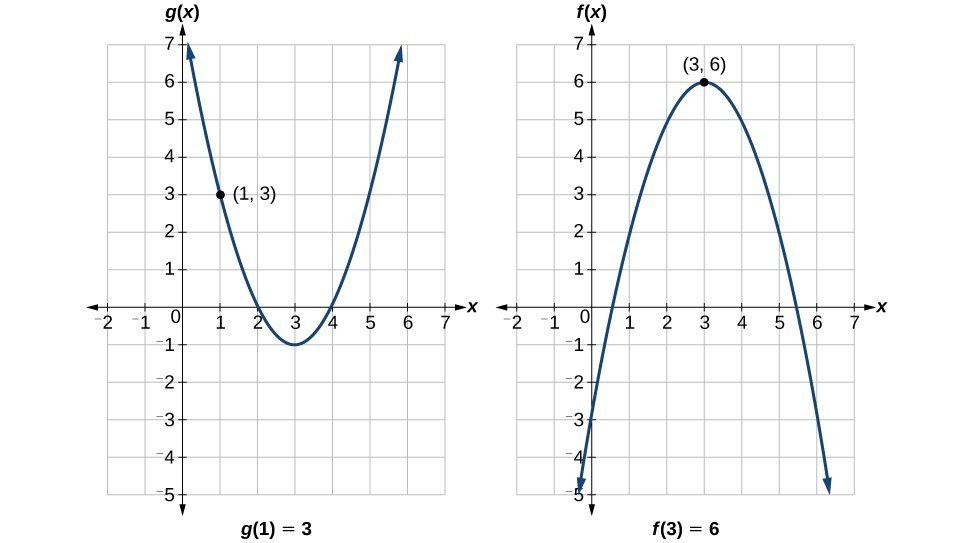



Evaluate Composite Functions College Algebra




The Graph Of F X Shown Below Has The Same Shape As The Graph Of G X X 4 But It S Shifted 3 Brainly Com



Solved Roger Has The Graph Of F X 4 X 2 But Needs To Sketch The Graph Of Describe How Roger Can Use The Graph Of F X



Efisd Net Common Pages Displayfile Aspx Itemid



Answer In Algebra For Patrick J
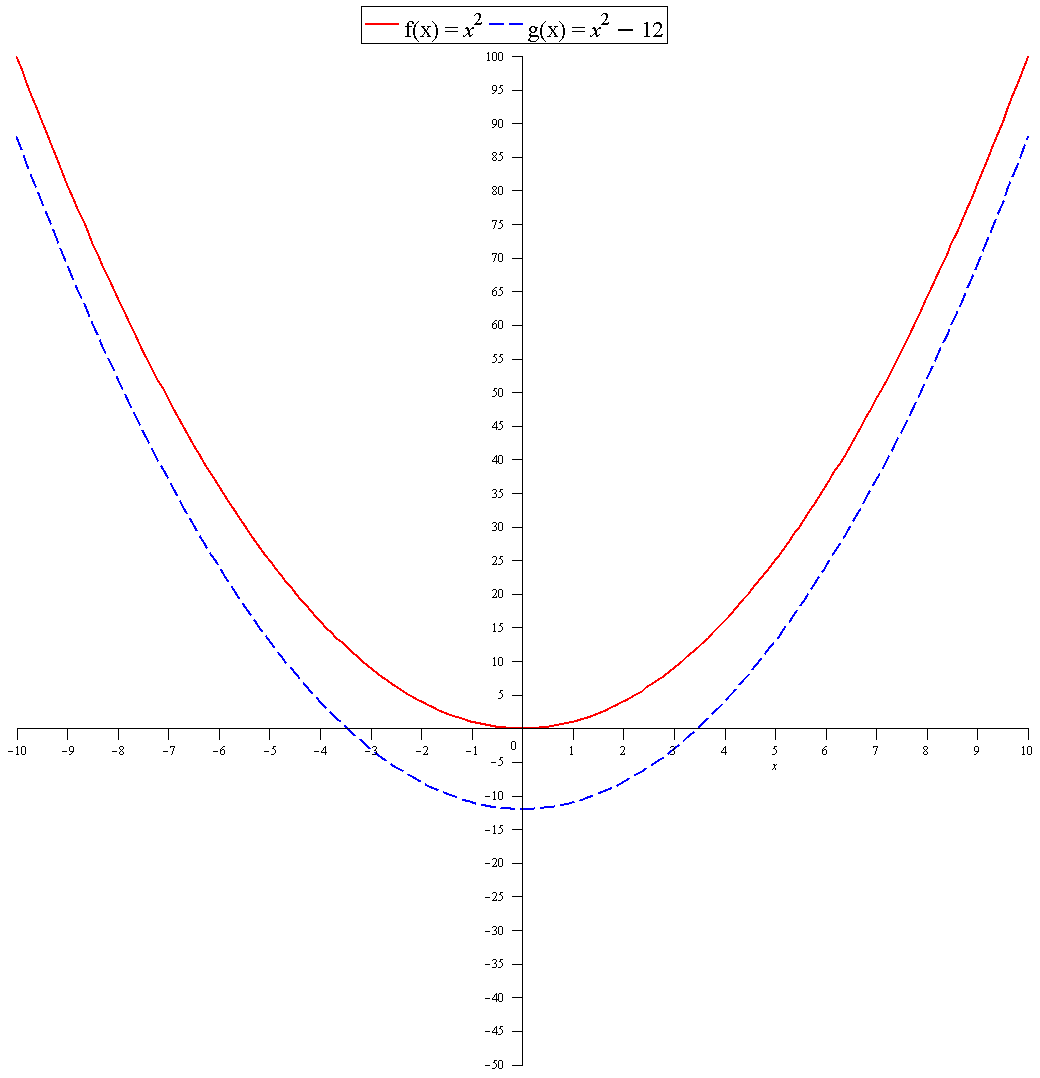



How Is The Graph Of G X 12 X 2 Related To The Graph Of F X X 2 Socratic
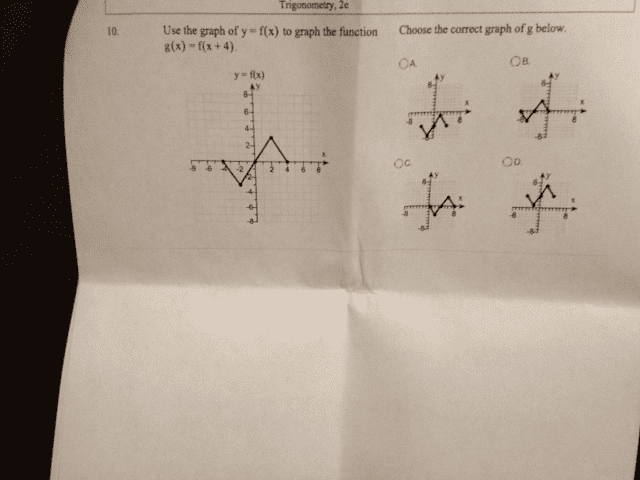



Oneclass Use The Graph Of Y F X To Graph The Function G X F X 4 Choose The Correct Graph



Business Calculus



Graphing Quadratic Functions




I Can Graph And Transform Absolute Value Functions Ppt Download



Www Lcps Org Cms Lib Va Centricity Domain 3665 Unit 4 day 7 notes a2 Pdf



Www Humbleisd Net Cms Lib2 Tx Centricity Domain 3611 Answer review final exam fall Pdf



Http Math Arizona Edu Cjewell 122b Handouts Derivativepractice Pdf




The Graph Of F X Shown Below Has The Same Shape As The Graph Of G X X 4 But It Is Shifted 3 Brainly Com




Reflecting Functions Examples Video Khan Academy



Secure Media Collegeboard Org Digitalservices Pdf Ap Apcentral Ap15 Calculus Ab Q2 Pdf



Search Q Graph Transformations Tbm Isch




Solve An Absolute Value Equation College Algebra




Consider The Following F X X 4 9x 2 G X X 2 9 A Graph The Region Bounded By The Graphs Of The Equations B Find The Area Of The Region Analytically
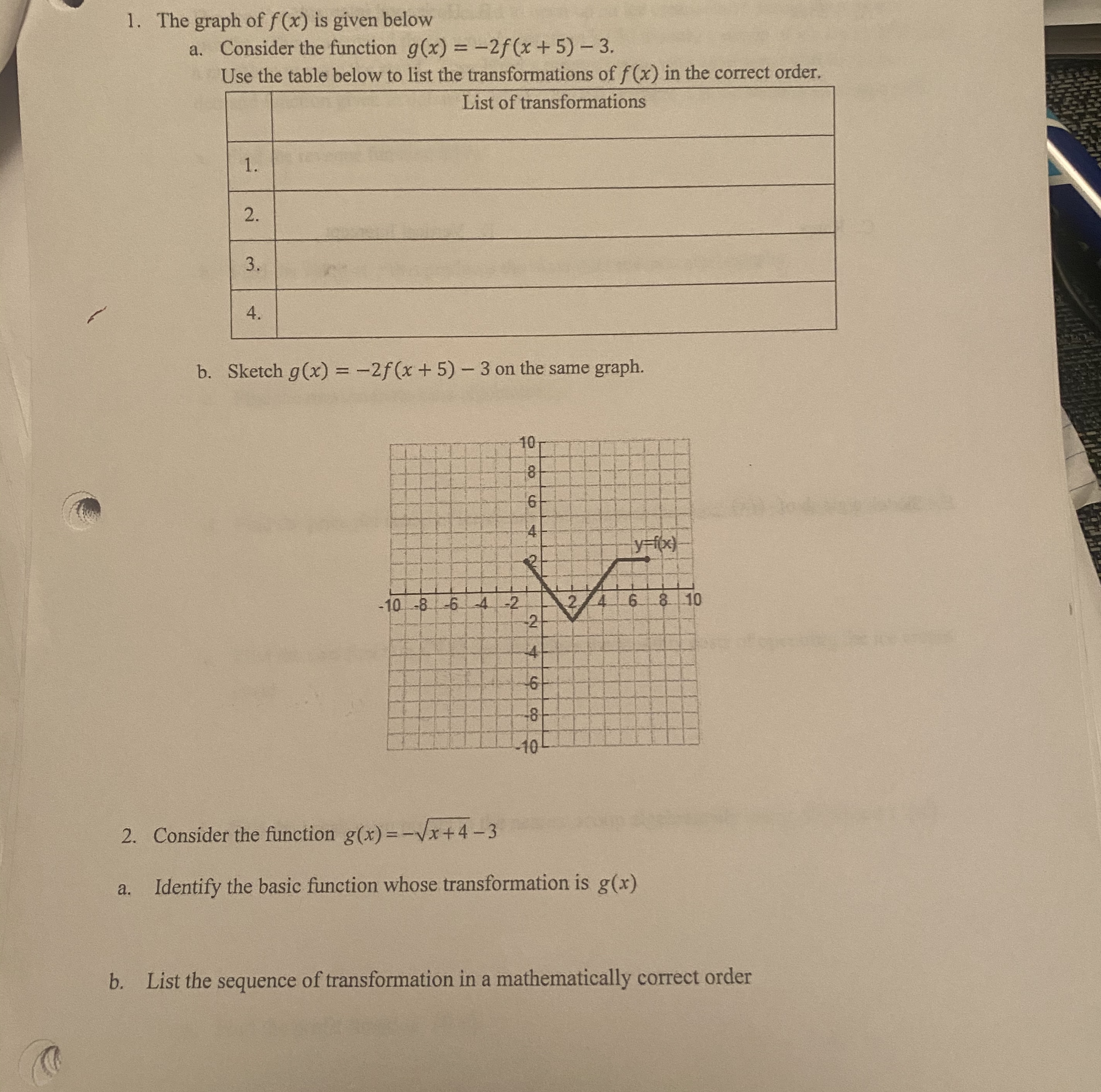



Answered 1 The Graph Of F X Is Given Below Bartleby




The Graph Of F X Shown Below Has The Same Shape As The Graph Of G X X 4 But It Is Shifted 4 Units Brainly Com
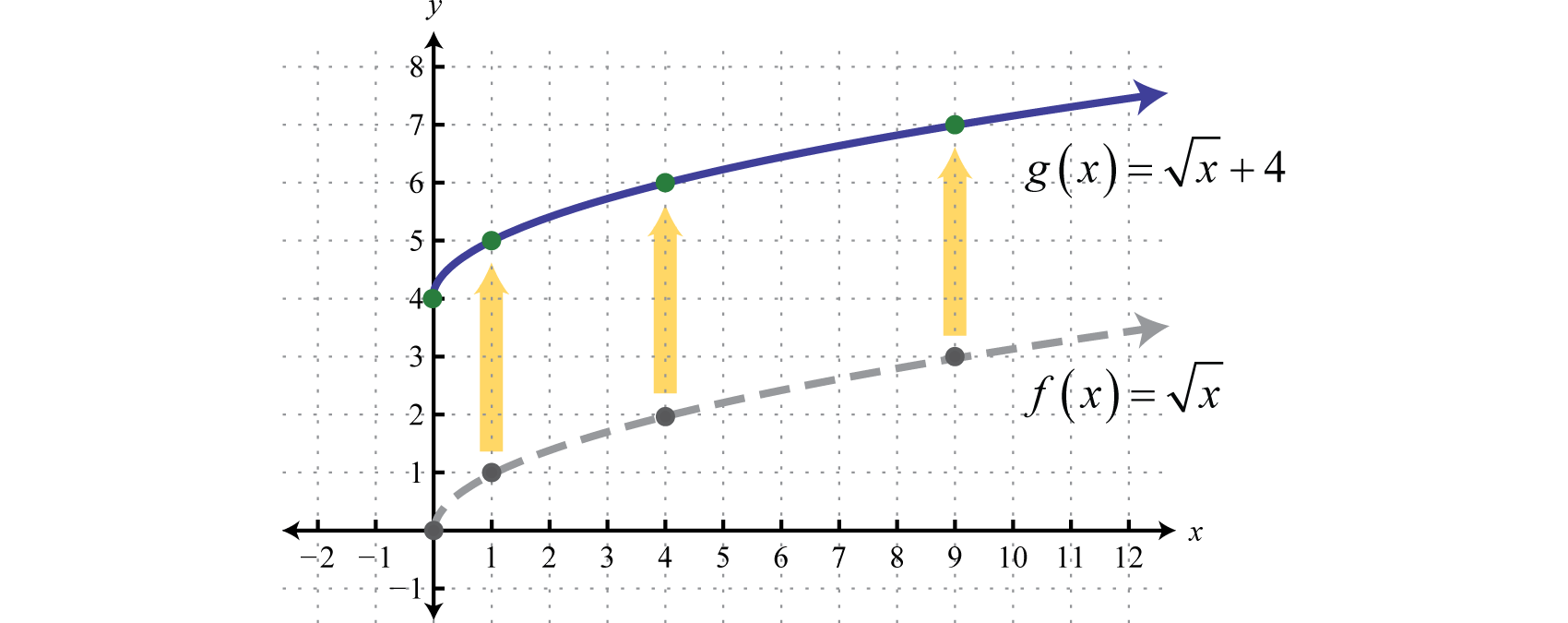



Using Transformations To Graph Functions




Suppose Y F X And Y G X Are Two Continuous Functiond Whose Graph




Exponential Functions Ck 12 Foundation
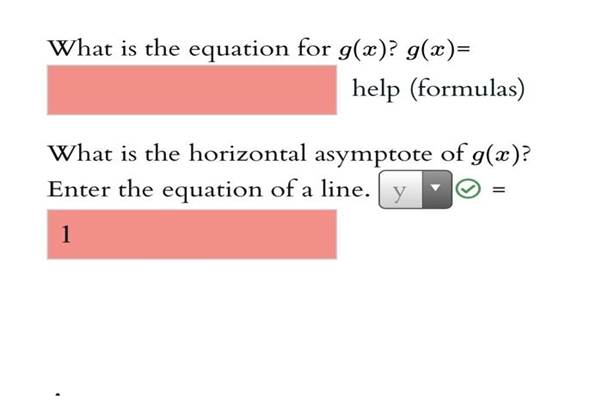



Get Answer The Graph Of F X 4 0 65 Is Given Below Click On Graph To Transtutors



Solution Graph F X 1 4 X And G X Log1 4 X In The Same Rectangular Coordinate System
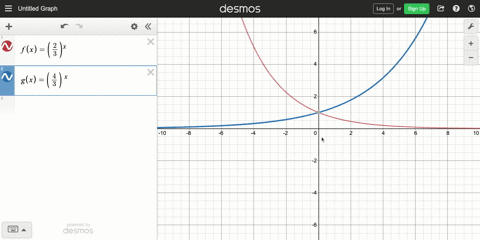



Solved Graph Both Functions On One Set Of Axes F X 4 X Quad Text And Quad G X 7 X




Graphing Shifted Functions Video Khan Academy




If H X F G X What Is The Value Of H 3 Youtube



0 件のコメント:
コメントを投稿